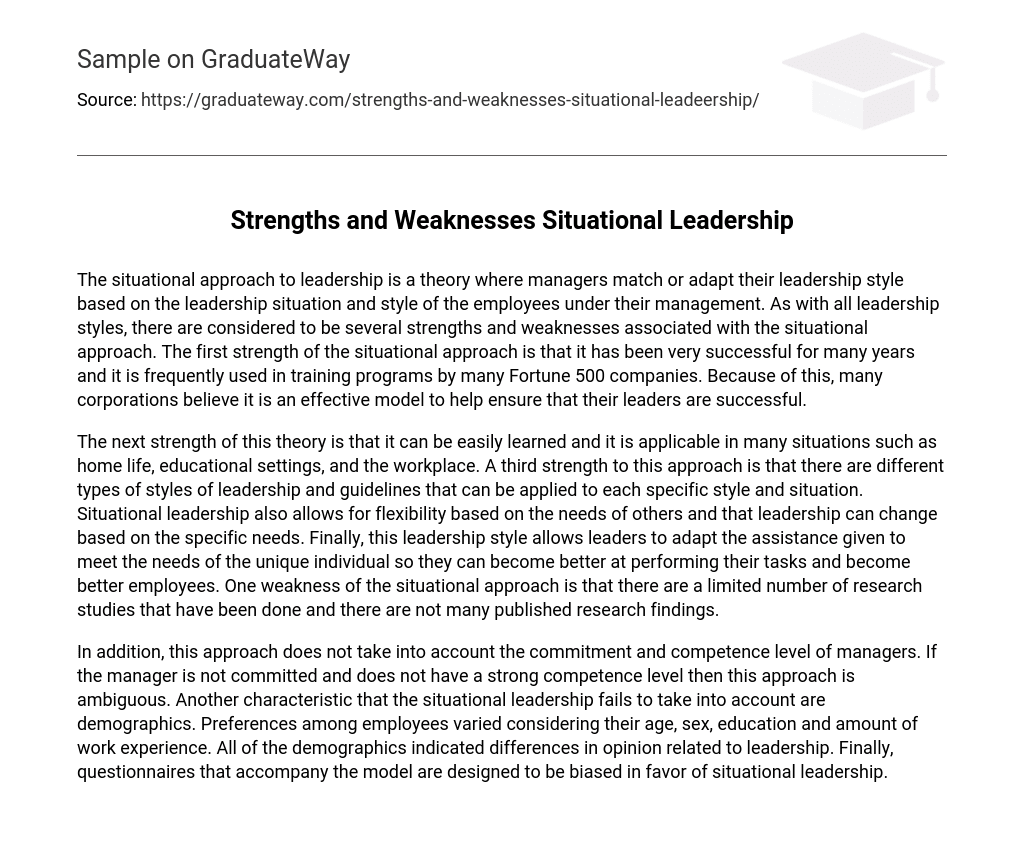The situational approach to leadership is a theory where managers match or adapt their leadership style based on the leadership situation and style of the employees under their management. As with all leadership styles, there are considered to be several strengths and weaknesses associated with the situational approach. The first strength of the situational approach is that it has been very successful for many years and it is frequently used in training programs by many Fortune 500 companies. Because of this, many corporations believe it is an effective model to help ensure that their leaders are successful.
The next strength of this theory is that it can be easily learned and it is applicable in many situations such as home life, educational settings, and the workplace. A third strength to this approach is that there are different types of styles of leadership and guidelines that can be applied to each specific style and situation. Situational leadership also allows for flexibility based on the needs of others and that leadership can change based on the specific needs. Finally, this leadership style allows leaders to adapt the assistance given to meet the needs of the unique individual so they can become better at performing their tasks and become better employees. One weakness of the situational approach is that there are a limited number of research studies that have been done and there are not many published research findings.
In addition, this approach does not take into account the commitment and competence level of managers. If the manager is not committed and does not have a strong competence level then this approach is ambiguous. Another characteristic that the situational leadership fails to take into account are demographics. Preferences among employees varied considering their age, sex, education and amount of work experience. All of the demographics indicated differences in opinion related to leadership. Finally, questionnaires that accompany the model are designed to be biased in favor of situational leadership.





